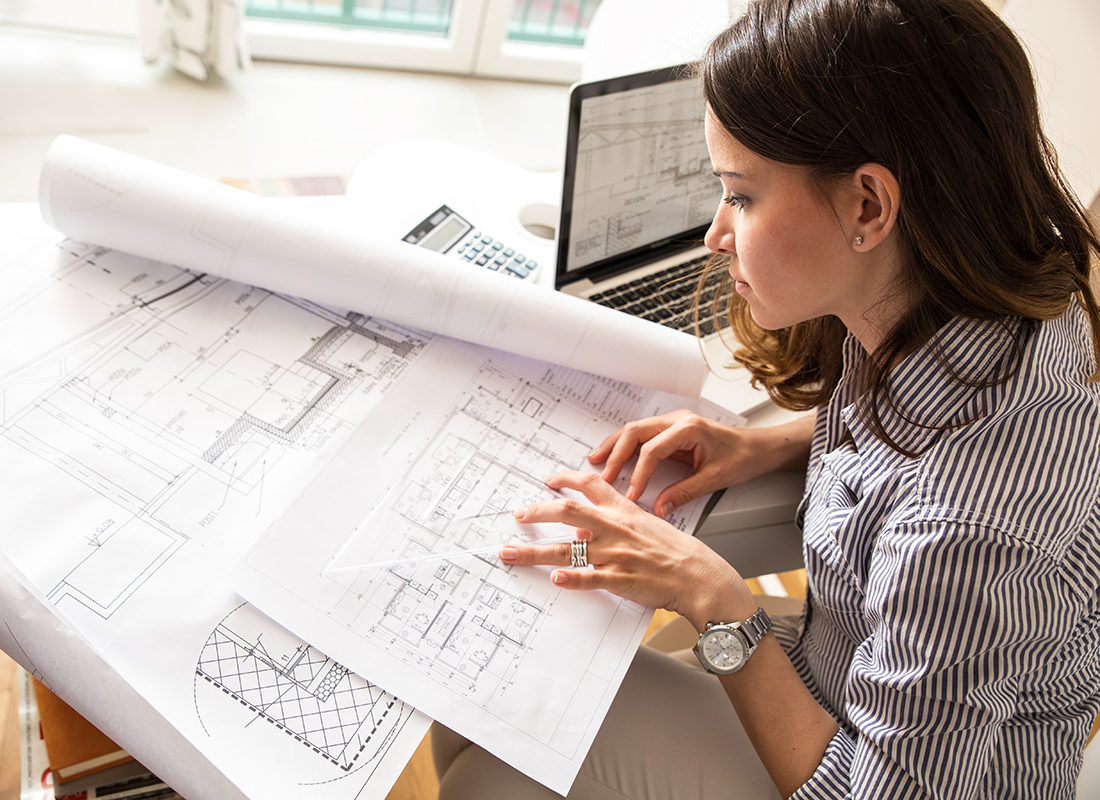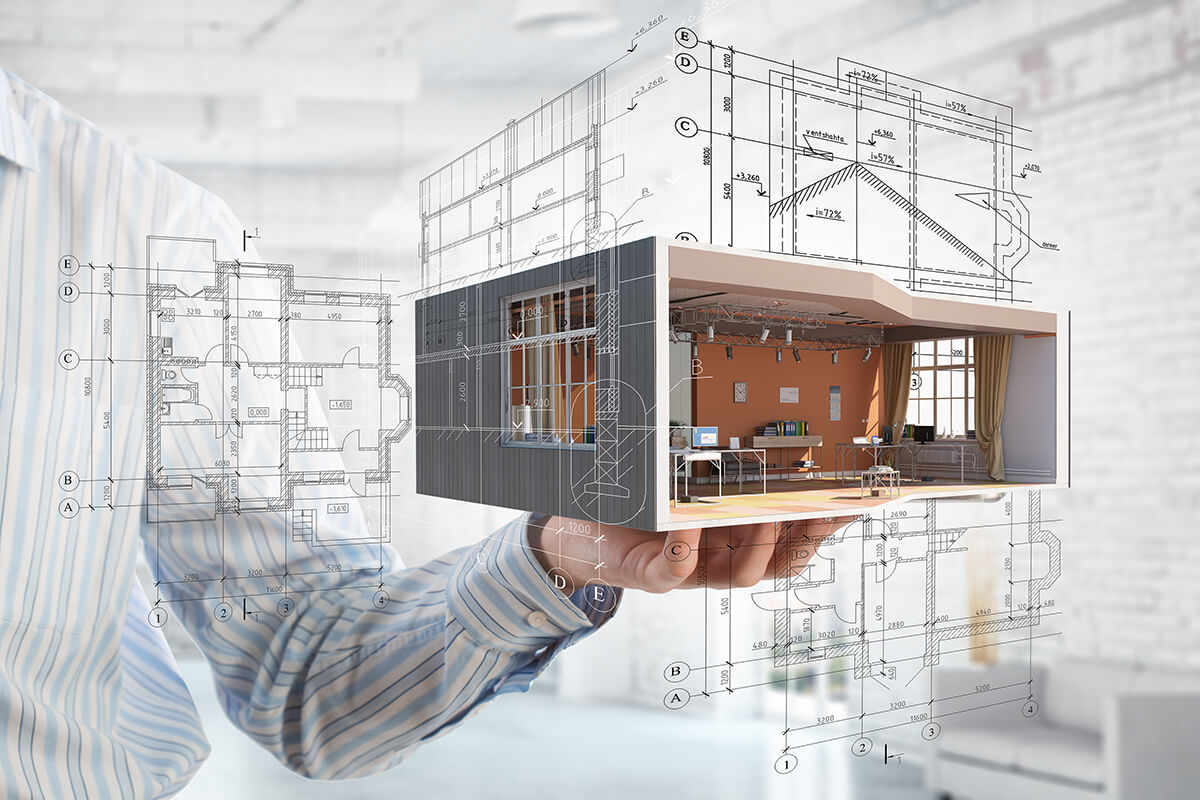Architect Recommended Apps for 3D Modeling
Architect Recommended Apps for 3D Modeling
Blog Article
Understanding the Diverse Profession Paths Available for Aspiring Architect
As an aspiring Architect, you have a world of job paths awaiting you. Each course offers unique obstacles and chances to use your imagination and technological know-how. Whether you're attracted to conventional style or the nuances of sustainable layout, there's a niche that straightens with your passions. Recognizing these diverse options can form your specialist journey, however which instructions will you pick to check out initially?
Standard Architecture: Creating Frameworks and structures
Standard design concentrates on developing buildings and frameworks that mix performance with aesthetic charm. Your styles can reflect social heritage, showcasing local customs while meeting modern-day needs.
You'll develop abilities in drafting, model-making, and website analysis, permitting you to imagine and connect your concepts properly. Involving with clients, you'll require to comprehend their vision and convert it right into practical layouts.
In addition, constructing codes and sustainability methods are essential in your job, guaranteeing your structures are eco friendly and secure. As you expand in your occupation, you'll discover opportunities in residential, industrial, or perhaps reconstruction jobs, each offering unique obstacles. Welcoming conventional design leads the way for a meeting career that pays homage to the past while shaping the future.
Urban Planning: Forming Areas and Public Spaces
As an aspiring Architect, you can play a vital function as a city organizer, transforming exactly how communities function and interact. By utilizing community interaction strategies, you'll ensure that locals have a voice fit their environment. And also, integrating lasting style concepts will certainly aid develop spaces that not only fulfill today's needs however additionally protect the future.
Role of Urban Planners
While numerous may consider designers as the single enthusiasts behind structures, urban organizers play an essential role fit the wider landscape of communities and public rooms. They evaluate land usage, zoning legislations, and community needs to create lasting settings that boost lifestyle. By collaborating with different stakeholders, you'll assist develop parks, transportation systems, and suburbs that advertise social interaction and access. Urban coordinators additionally concentrate on ecological factors to consider, making certain that advancements integrate eco-friendly spaces and support biodiversity. Your proficiency in spatial layout and area dynamics enables you to imagine future development while preserving social heritage. In this essential role, you'll straight affect how people experience their surroundings, making every project a chance for favorable change.
Area Engagement Strategies
Efficient area engagement techniques are crucial for city organizers to ensure that the voices of locals are listened to and valued in the preparation procedure. To promote meaningful dialogue, you ought to prioritize open discussion forums and workshops where area participants can express their concepts and problems. Use surveys and social media sites to get to a more comprehensive audience, guaranteeing varied perspectives are consisted of. Collaborating with regional companies can enhance count on and help with much deeper connections. It is essential to offer clear details about decision-making procedures and suggested jobs, permitting citizens to really feel educated and equipped. By proactively including and listening responses, you'll create spaces that reflect the area's requirements, ultimately resulting in more sustainable and effective city settings. Embrace transparency and continuous discussion for long-term effect.
Sustainable Design Concepts
When creating metropolitan areas, incorporating sustainable style concepts is vital for producing atmospheres that grow both environmentally and socially. You must begin by focusing on power effectiveness, making use of products that lower waste and promote recycling. Consider incorporating environment-friendly spaces, like parks and yards, to boost biodiversity and boost air quality. Advertising walkability and public transportation can decrease dependence on vehicles, fostering a healthier neighborhood.
Designing with water conservation in mind is also vital-- consider rainfall gardens and permeable surface areas to handle stormwater. Including area members throughout the preparation procedure warranties that the areas you produce fulfill their needs and encourage social communication. By accepting these concepts, you'll add to vivid, lasting metropolitan landscapes that benefit everybody.

Landscape Style: Producing Sustainable Exterior Settings
As you explore landscape architecture, you'll discover vital style concepts that create useful and attractive exterior rooms. Lasting techniques play an important role in making certain these atmospheres thrive while reducing environmental impact. Plus, you'll discover a selection of career possibilities that enable you to make an actual distinction in how individuals connect with nature.
Layout Concepts in Landscape
Understanding layout principles in landscape style is crucial for creating lasting exterior environments that integrate with nature. You'll require to consider components like range, equilibrium, and proportion to ensure your layouts feel natural and welcoming. Additionally, pay focus to seasonal adjustments, creating with products that enhance the environments year-round.
Sustainable Practices Introduction
Lasting practices in landscape architecture not only focus on aesthetic appeals yet also prioritize environmental wellness and resource conservation. You can develop spaces that advertise dirt health, such as utilizing organic products and practicing permaculture principles. Ultimately, these practices ensure your layouts benefit both individuals and the environment click here for years to come.
Profession Opportunities Expedition
With a strong structure in sustainable techniques, landscape architecture supplies a variety of occupation courses that allow you to make a purposeful effect on the environment. You can work as a landscape designer, developing visually pleasing and functional outdoor rooms, or focus on eco-friendly repair, assisting to revitalize broken communities. Urban organizers often collaborate with landscape designers to create eco-friendly spaces in urban setups, enhancing city livability. If you're enthusiastic regarding education, take into consideration becoming a landscape architecture instructor, motivating future generations. In addition, you may work with nonprofits focused on ecological sustainability or involve in research to innovate brand-new methods. Each course not only shapes stunning environments but also fosters a much healthier earth for future generations.
Sustainable Design: Concentrating On Eco-Friendly Practices
As you discover your career in style, embracing environmentally friendly practices can establish you apart in an affordable field. Sustainable design concentrates on creating buildings that decrease ecological influence while improving passenger wellness. By including eco-friendly products, energy-efficient systems, and lasting structure strategies, you'll contribute to a greener future.
Begin by obtaining knowledge of green accreditations like LEED or BREEAM, which can bolster your credentials. Take into consideration just how natural light, ventilation, and thermal performance can maximize style. Collaborate with designers and ecological experts to introduce options that reduce waste and preserve resources.
Do not neglect the significance of area participation-- appealing neighborhood stakeholders can influence styles that balance with the setting. As clients increasingly prioritize sustainability, your expertise in eco-friendly methods will not just draw in projects but additionally accomplish your passion for responsible style. Accept this vital facet of the occupation, and see your job prosper.
Historic Preservation: Safeguarding and Recovering Social Heritage
While you commence on your architectural trip, consider the crucial function of historical preservation in maintaining our cultural heritage. This area concentrates on the protection and reconstruction of considerable structures, sites, and structures that tell the tales of our past. By taking part in historical conservation, you'll help protect the building legacy that forms neighborhood identification.
As a historic conservation Architect, you'll assess historic value and evaluate the condition of structures. You'll function very closely with chroniclers and preservationists to assure authentic restoration strategies are utilized. This career course enables you to blend imagination with study, allowing you to design services that respect original materials and craftsmanship.
Your work not just adds to sustainability by reusing existing buildings however additionally cultivates a feeling of pride within communities. Embracing this course will aid you end up being a guardian of background, preserving the stories and looks that enrich our lives.
Inside Architecture: Enhancing Indoor Spaces
Historic preservation and interior design both share a commitment to enhancing the built atmosphere, however they concentrate on different elements. While historic preservation stresses preserving a framework's historical and social value, indoor design nos in on enhancing interior spaces for functionality and looks.
As a hopeful Architect, you'll find that indoor architecture allows you to mix creative thinking with technological skills. You'll create areas that not only look excellent but likewise advertise convenience and efficiency. This area includes comprehending exactly how light, shade, and materials interact within a space, affecting mood and functionality.
You'll work on different jobs, from domestic homes to commercial offices, guaranteeing that each environment fulfills the needs of its owners. By prioritizing individual experience, you can change insides right into functional and inspiring rooms, making a considerable effect on how individuals communicate with their environments. Welcome the chance to enhance indoor atmospheres and shape the method individuals work and live.
Industrial Style: Merging Performance With Looks
Commercial layout plays an important role in creating items that perfectly blend appearances with functionality, making sure that what you utilize day-to-day is not only aesthetically enticing but additionally practical. As a hopeful Architect, you might immerse on your own in this field, concentrating on creating every little thing from furniture check here to customer electronic devices. Your work entails recognizing individual requirements, materials, and producing procedures, enabling you to produce cutting-edge remedies that improve daily experiences.
In commercial design, you'll typically collaborate with marketers, engineers, and suppliers, making sure that your layouts are not just gorgeous however likewise possible. You'll discover to stabilize form and function, prioritizing use without sacrificing design. By refining your skills in laying out, 3D modeling, and prototyping, you'll here be well-appointed to bring your ideas to life. This career path provides a vibrant environment where creative thinking meets functionality, making it a gratifying option for engineers interested in forming the items of tomorrow.
Regularly Asked Concerns
What Educational Credentials Do I Required to End Up Being an Architect?
To end up being an architect, you'll require a professional level in style, generally a Bachelor's or Master's. Furthermore, you'll need to complete an internship and pass the Architect Enrollment Exam to exercise legally.
Are There Qualification Requirements for Different Building Career Paths?
Yes, there're qualification requirements for various building paths. Architect. You'll need to pass exams, total teaching fellowships, and occasionally go after specialized training, relying on your picked emphasis, like landscape architecture, city layout, or historical preservation
What Software Application Skills Are Crucial for Architects Today?

Just How Can I Gain Practical Experience While Studying Architecture?
You can obtain functional experience by interning at architectural companies, taking part in layout competitions, volunteering for area tasks, or collaborating with schoolmates on real-world projects. These opportunities improve your skills and build valuable links in the market.
What Task Opportunities Exist Outside Typical Style Firms?
You can discover different work chances outside conventional architecture firms, like metropolitan planning, indoor style, landscape design, building administration, property advancement, or perhaps roles in sustainability consulting. Each offers distinct obstacles and rewards.
Whether you're attracted to conventional style or the nuances of lasting layout, there's a particular niche that lines up with your interests.When creating urban rooms, including sustainable layout principles is critical for producing atmospheres that grow both environmentally and socially.As you explore landscape style, you'll discover essential design principles that create beautiful and practical exterior rooms.Comprehending layout concepts in landscape design is important for producing sustainable outside settings that integrate with nature.In industrial design, you'll often work together with engineers, online marketers, and producers, ensuring that your layouts are not only stunning yet also feasible.
Report this page